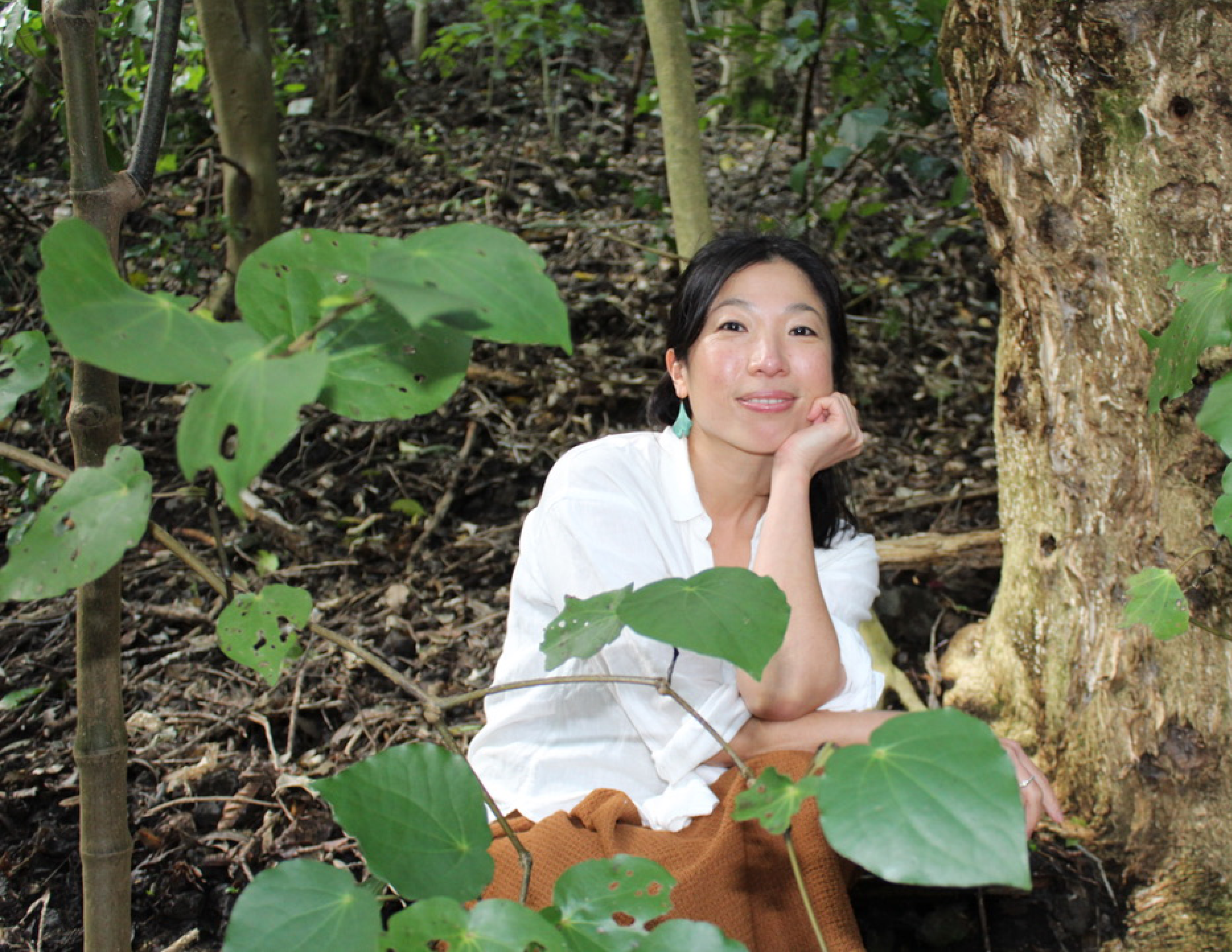
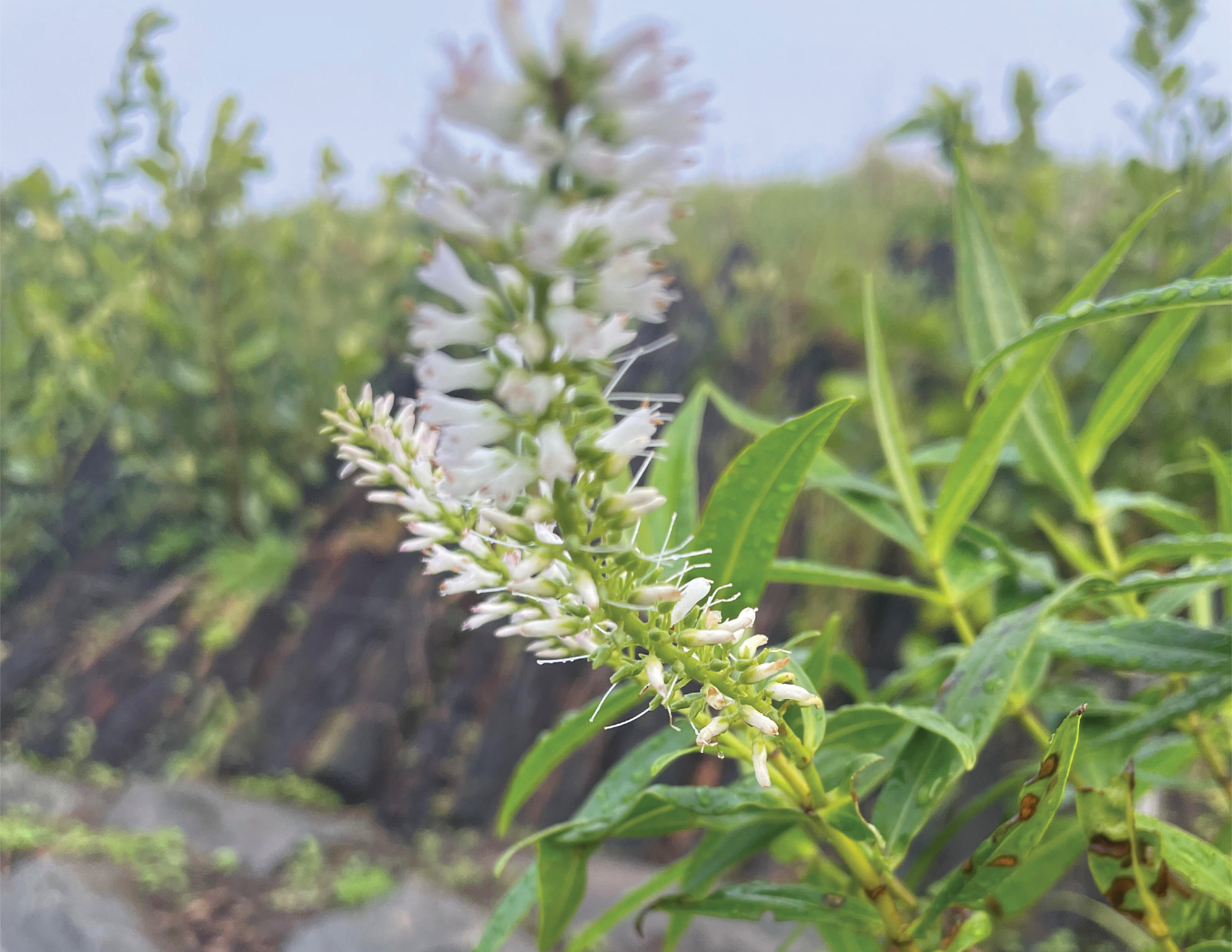
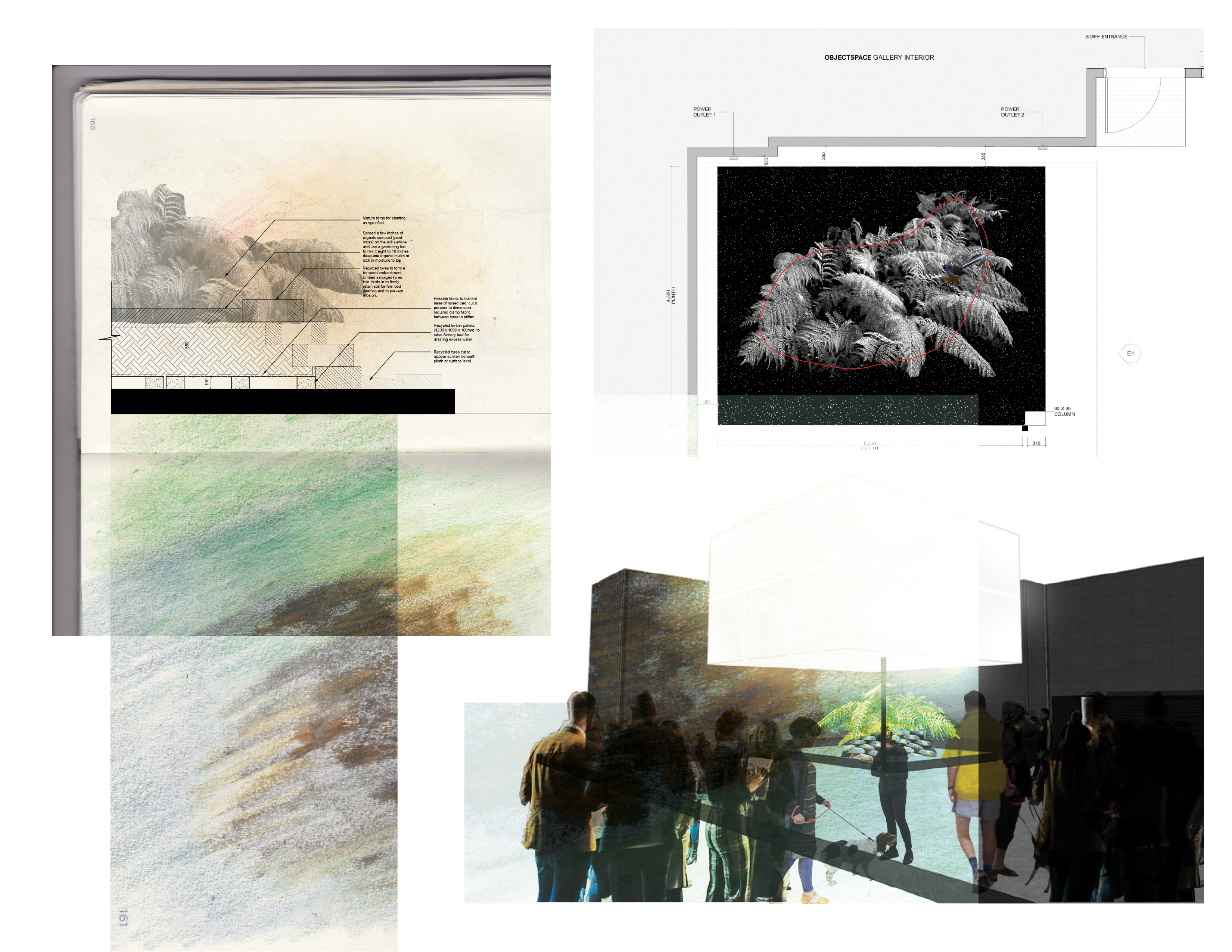
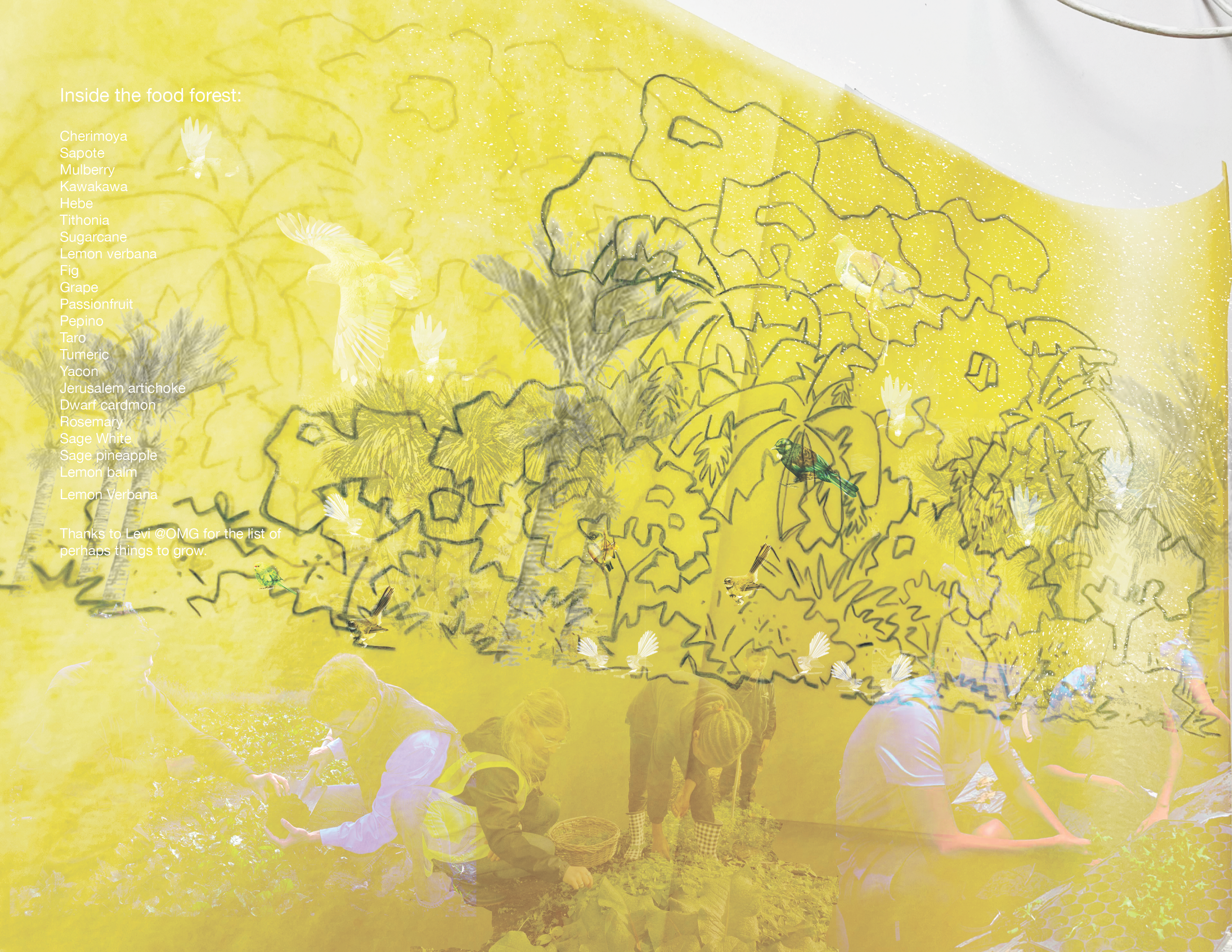
Studio interview with Architecture + Woman NZ by: Natasha Clayton (NZIA Registered Architect)
Photo Credits: Liz Allan
1. Can you tell us a bit about your journey — what brought you back home to Aotearoa, and how has that influenced the direction of your studio practice?
There are so many things that I love during my long time living in Melbourne, it would be hard to say that the city across the ditch has not shaped me. It really was a to & fro before I chose to make the shift back home, here to Tāmaki Makaurau.
I think, like many of us that are lucky enough to travel or live overseas, there is something epically grounding about coming home and landing back in Aotearoa. I really do enjoy such simple things now, like being able to walk up Maungawhau and having the water always in close proximity, and all the creatives! Here too — we’re lucky.
I had a lot of great inspiration in Australia and even more recently, when visiting my brothers new little family and linking back to my family roots in Taiwan. We actually got to go to Taipei with dad to dig up grandpa’s bones from where he was buried to bring them further down hill to where my grandmothers remains are — set in a valley of established pomello trees. I never would have thought that there was a thing to pomelo trees in cemetaries.
These experiences have for sure been a leaf in guiding my studio to lean-in to working with people that share the same permaculture ethos for earth care, people care and fair share — I feel like I am in an exciting part of my studio journey with more hands-on approaches to design opportunities, all while knowing how to cultivate healthy soil and growing wild foods.
2. Your work weaves together permaculture, garden-to-table design, and ecology. How do these principles shape the way you approach landscape architecture?
Through a few recent opportunities I have been lucky to join a consortium who are thinking about how we can develop a 100-year vision for Aotearoa around nature based solutions — it has been a real nice beginning in knowing about whenua, Maori land, as being an integral part of the identity of Tangata Whenua, and the knowledge of local iwi.
We are lucky enough in Tāmaki Makaurau that most of our soil is volcanically rich and moist, ideal conditions for growing things — and really, what is there not to like about the seasonalities for a garden-to-table philosophy when things cost too much?
Of course, I can understand — not all clients are open to their whole garden space being a food forest while catering a native planting pallet for our local fauna species.
Photo Credits: Liz Allan
1. Can you tell us a bit about your journey — what brought you back home to Aotearoa, and how has that influenced the direction of your studio practice?
There are so many things that I love during my long time living in Melbourne, it would be hard to say that the city across the ditch has not shaped me. It really was a to & fro before I chose to make the shift back home, here to Tāmaki Makaurau.
I think, like many of us that are lucky enough to travel or live overseas, there is something epically grounding about coming home and landing back in Aotearoa. I really do enjoy such simple things now, like being able to walk up Maungawhau and having the water always in close proximity, and all the creatives! Here too — we’re lucky.
I had a lot of great inspiration in Australia and even more recently, when visiting my brothers new little family and linking back to my family roots in Taiwan. We actually got to go to Taipei with dad to dig up grandpa’s bones from where he was buried to bring them further down hill to where my grandmothers remains are — set in a valley of established pomello trees. I never would have thought that there was a thing to pomelo trees in cemetaries.
These experiences have for sure been a leaf in guiding my studio to lean-in to working with people that share the same permaculture ethos for earth care, people care and fair share — I feel like I am in an exciting part of my studio journey with more hands-on approaches to design opportunities, all while knowing how to cultivate healthy soil and growing wild foods.
2. Your work weaves together permaculture, garden-to-table design, and ecology. How do these principles shape the way you approach landscape architecture?
Through a few recent opportunities I have been lucky to join a consortium who are thinking about how we can develop a 100-year vision for Aotearoa around nature based solutions — it has been a real nice beginning in knowing about whenua, Maori land, as being an integral part of the identity of Tangata Whenua, and the knowledge of local iwi.
We are lucky enough in Tāmaki Makaurau that most of our soil is volcanically rich and moist, ideal conditions for growing things — and really, what is there not to like about the seasonalities for a garden-to-table philosophy when things cost too much?
Of course, I can understand — not all clients are open to their whole garden space being a food forest while catering a native planting pallet for our local fauna species.
I think a project like Maud St. draws on this corridor in linking the kitchen-to-terraced wild food area — while the plan for the garden flow invites the bedroom to step out into a fernery with a small pond, to where it’s more low lit and sheltered.
The space does manage to capture some sunlight for such exotics like a pomegranate tree to grow.
![]()
![]()
3. You also teach yoga — how does this practice influence your design thinking, particularly around spatial flow and movement?
So much of our day we spend in our mind and out of the body, I think Yoga is a great way to counter that desk warrior pose — the practice really has skills in mindfulness, in being able to breathe deeply and keeping a tall spine in reversing the office posture. Could we explore notions of breathing or flexing in designing the flows in ecology?
![]()
![]()
4. What excite you most about working at the intersection of
art, design, ecology, and wellbeing?
I always get excited when a garden project lands with the creative interest of the client wanting to look into something like the simple garden and house ideologies to mesh art and architecture. I feel like these environmentally-minded projects are a nice way to mirror the clients’ home and lifestyles.
I think being able to centre more holistic project endeavors that tend to the health of our cultural narratives and share creative pursuits towards wellness is an interesting design conversation. During my time working in Rail Projects Victoria, I got a lot of great inspiration workshopping together in citizen-led commissions.
5. Have you found any challenges in carving out a practice that leans away from traditional architectural pathways?
Lately, I have been developing this gardenshed prototype and it's been real nice gauging feedback from my community down at the Grid space, local architects and my friends too.
Being able to think about this small outdoor storage unit as a bit of an art project that thinks more about sustainability with lo-fi materials and low-technologies in something that leans closer to architecture has helped me to steer away from the greediness of selling things and doing what I know directly to market.
![]()
The space does manage to capture some sunlight for such exotics like a pomegranate tree to grow.
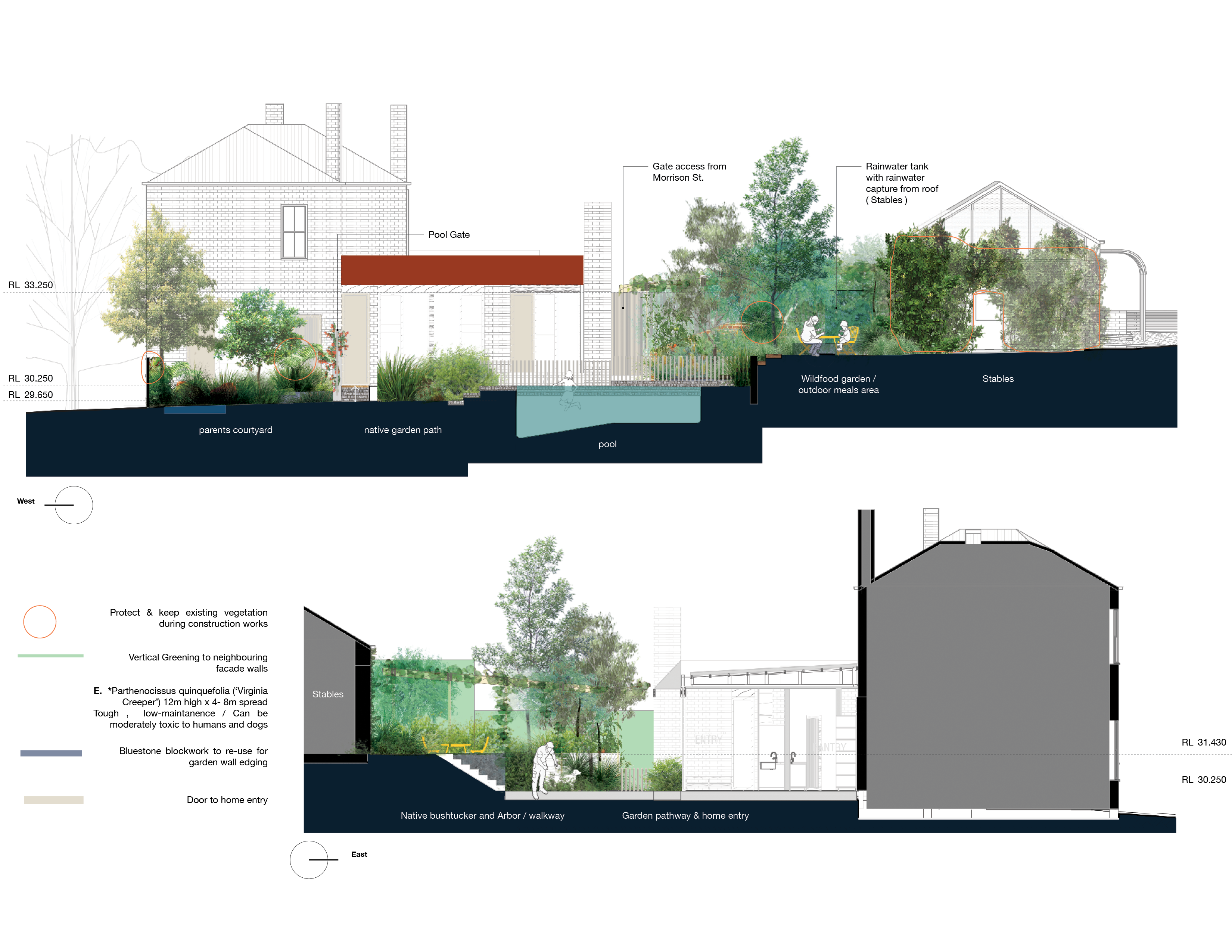
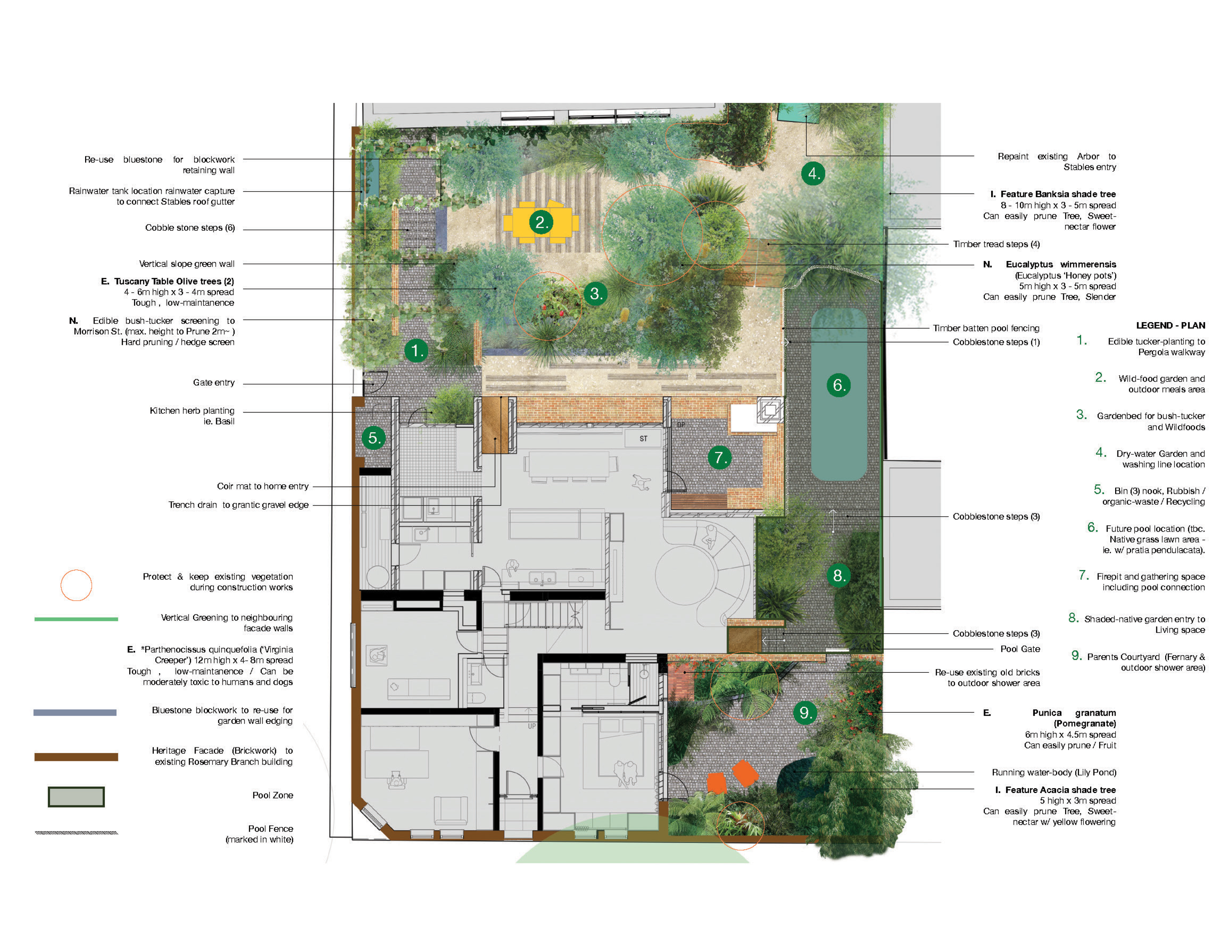
3. You also teach yoga — how does this practice influence your design thinking, particularly around spatial flow and movement?
So much of our day we spend in our mind and out of the body, I think Yoga is a great way to counter that desk warrior pose — the practice really has skills in mindfulness, in being able to breathe deeply and keeping a tall spine in reversing the office posture. Could we explore notions of breathing or flexing in designing the flows in ecology?
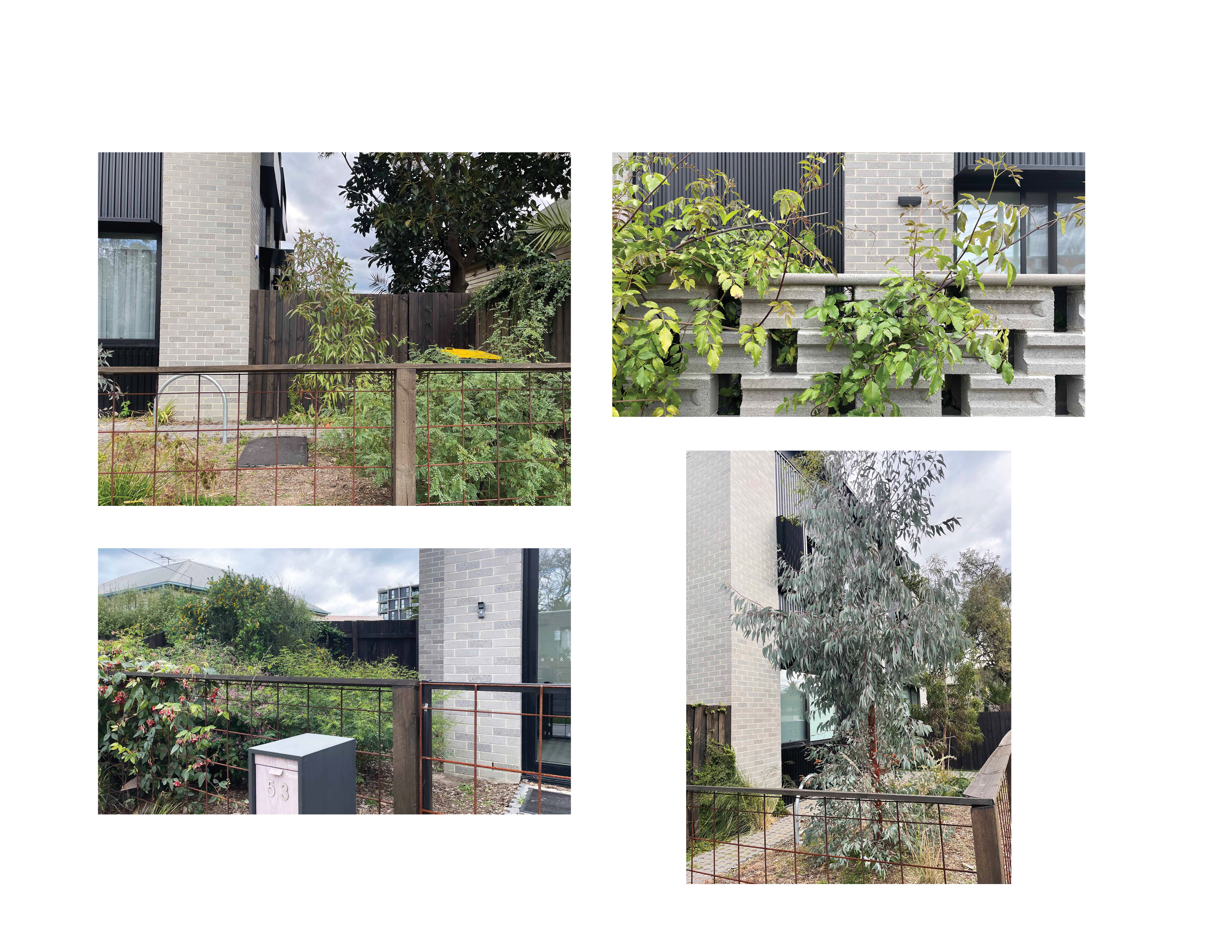
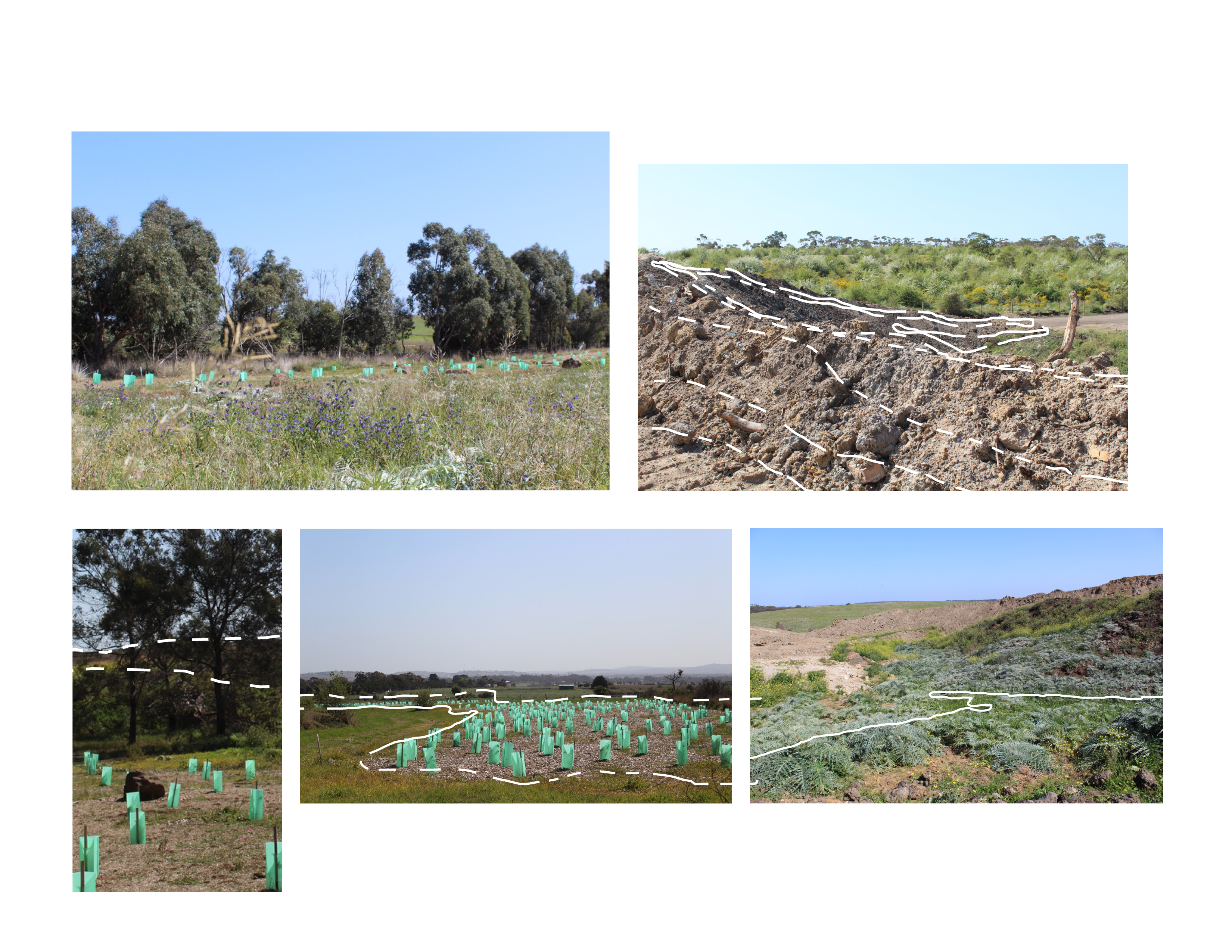
4. What excite you most about working at the intersection of
art, design, ecology, and wellbeing?
I always get excited when a garden project lands with the creative interest of the client wanting to look into something like the simple garden and house ideologies to mesh art and architecture. I feel like these environmentally-minded projects are a nice way to mirror the clients’ home and lifestyles.
I think being able to centre more holistic project endeavors that tend to the health of our cultural narratives and share creative pursuits towards wellness is an interesting design conversation. During my time working in Rail Projects Victoria, I got a lot of great inspiration workshopping together in citizen-led commissions.
5. Have you found any challenges in carving out a practice that leans away from traditional architectural pathways?
Lately, I have been developing this gardenshed prototype and it's been real nice gauging feedback from my community down at the Grid space, local architects and my friends too.
Being able to think about this small outdoor storage unit as a bit of an art project that thinks more about sustainability with lo-fi materials and low-technologies in something that leans closer to architecture has helped me to steer away from the greediness of selling things and doing what I know directly to market.
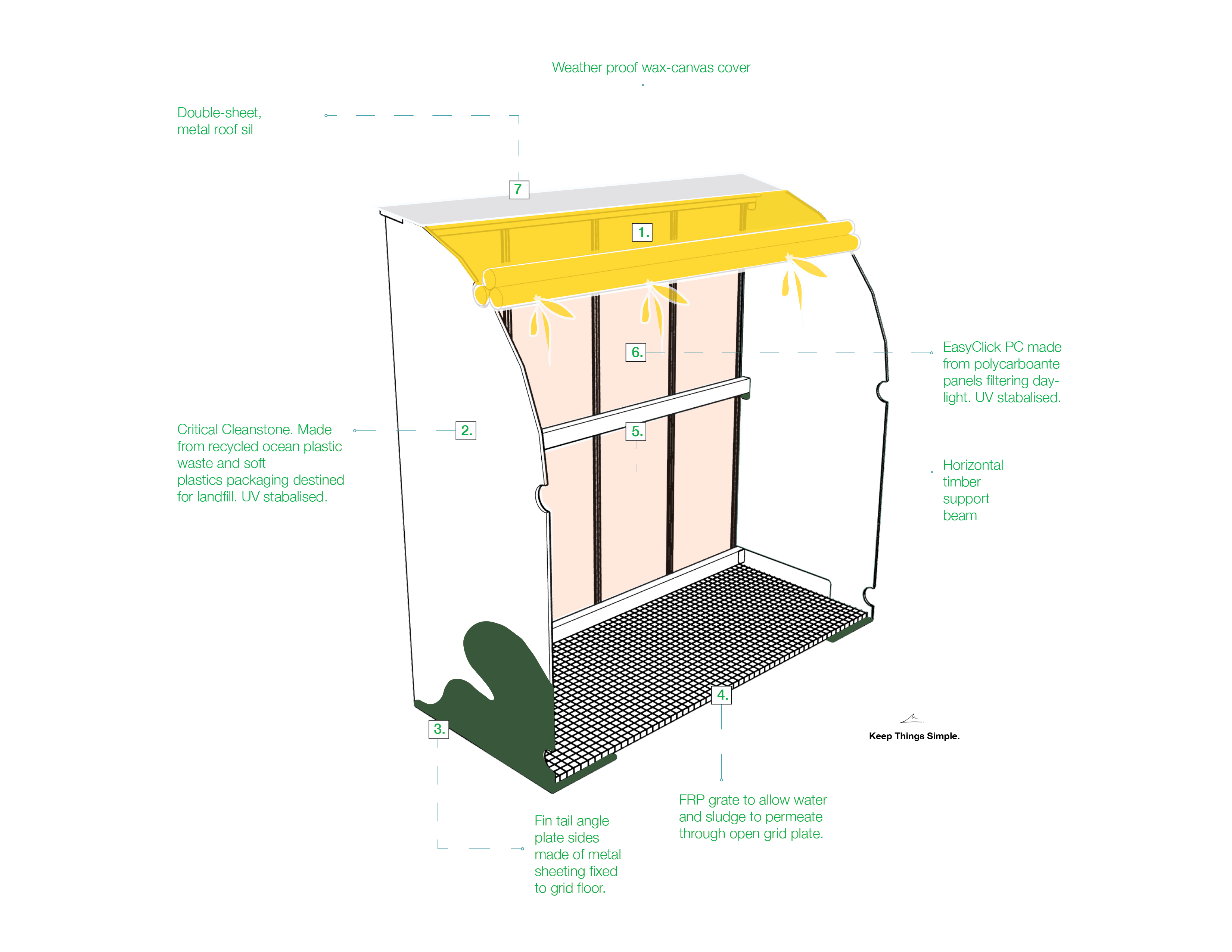
6. Collaboration seems central to your philosophy — what role do like-minded, environmentally conscious communities play in your work?
I think naturally art and design lends itself to be a cultural fixture in the way we spatially explore or view the things we find to be grounding and visually appealing about a place, and I feel like this commonality — in working with like-minded creatives — sits better both socially and environmentally for project outcomes today.
So yeah, rather than just who’s doing what, and with who? It is brave to venture into your local community garden or creative spaces and begin to share.
7. What does a ‘garden-to-table’ approach mean for you in terms of design outcomes and community impact?
I don’t have kids yet, but it was very cool to go for a visit to Meadowbank Primary and gain an insight into their garden-to-table food program that initially started as a pilot. I think what struck me most about the initiative is the strongly tied social link it has in growing, harvesting together and sharing kai as prepped by kids! While behind the scenes there is help to structure and organise what happens, I gathered the design comes with a loose framework in knowing what to grow and where, with a lot of willing support and hands-on work.
I think the ideals in growing something like the golden kumara, or harvesting magnolia flowers to make a syrup of sorts can bring a new spin to what harvesting happens through the garden design, while thinking about what the garden feels and smells like before the sharing of kai happens.
8. Looking ahead, where do you see your studio evolving? Are there particular projects or directions you’re keen to explore further?I think naturally art and design lends itself to be a cultural fixture in the way we spatially explore or view the things we find to be grounding and visually appealing about a place, and I feel like this commonality — in working with like-minded creatives — sits better both socially and environmentally for project outcomes today.
So yeah, rather than just who’s doing what, and with who? It is brave to venture into your local community garden or creative spaces and begin to share.
7. What does a ‘garden-to-table’ approach mean for you in terms of design outcomes and community impact?
I don’t have kids yet, but it was very cool to go for a visit to Meadowbank Primary and gain an insight into their garden-to-table food program that initially started as a pilot. I think what struck me most about the initiative is the strongly tied social link it has in growing, harvesting together and sharing kai as prepped by kids! While behind the scenes there is help to structure and organise what happens, I gathered the design comes with a loose framework in knowing what to grow and where, with a lot of willing support and hands-on work.
I think the ideals in growing something like the golden kumara, or harvesting magnolia flowers to make a syrup of sorts can bring a new spin to what harvesting happens through the garden design, while thinking about what the garden feels and smells like before the sharing of kai happens.
I think I am in a studio rebranding phase. Something that I am looking forward to is connecting with like-minded creatives and enthusiasts that care for where we live and how we go about designing for that: a better version of the future from what we can have today.
9. What advice would you give to other designers interested in stepping into an ‘expanded field’ of practice?
I feel like where I am in my career makes way for more opportunities to explore practices that open our professional skills to a more coherent, if not a more holistic way in which we can support our community … which is a good thing!
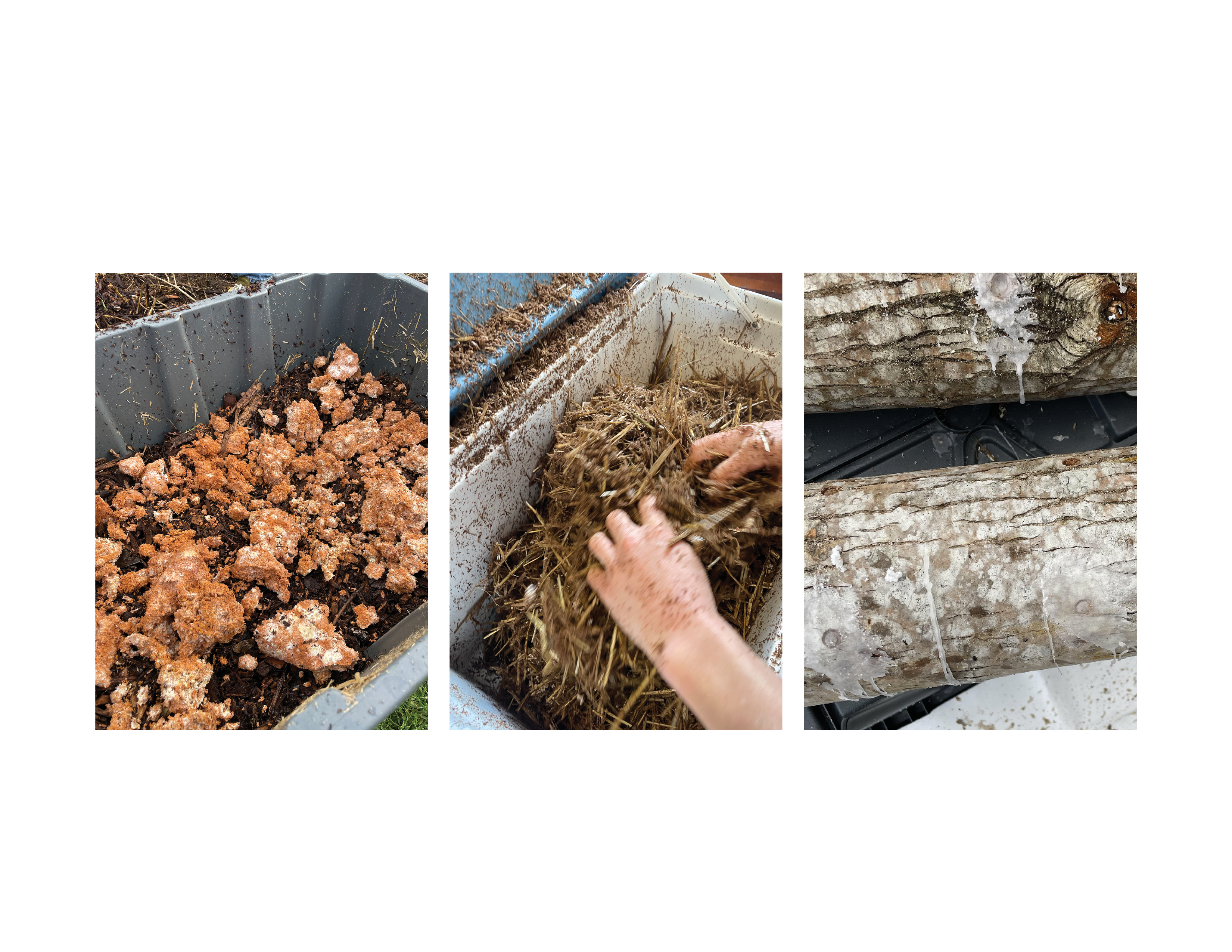
10. And finally — what does being part of the Architecture+Women NZ community mean to you?
I think there is everything that’s really beautiful about landing into a community that shares expressions as designers through both architecture and our expanded field in complementaries. It has been real nice to meet like-minded creatives that nurture our places through design and employ the wisdom to better our nature in being here.
![]() Pictures (Left to right): 1. Picture taken in Mt Eden 2. A flowering nz native Hebe 3. ‘Rubble rubble’ 2024 Objectspace courtyard design competition entry 4. Inside a Food Forest sketch 5.&6., Maud Street, section and plan drawings. Architecture by Placement
7. Clarendon St, Architecture by Lincoln Glover, Development by Property Collectives i.,ii.,iii. & vi. Native garden in the Australian style 8. Oaklands Rd., Wurundjeri Country by ResourceCo. i. Riparian planting of endangered species ii. Land-grading and grassland protection area iii. Regeneration of indigenous planting iv. Tube-stock tree planting v. Regeneration planting to site perimeter vi. Ecological v-drain 9. Gardenshed studio prototype 10. Preparations for growing mushrooms in moist environments i. Mushroom spawn in arborist mulch ii. Mushroom spawn in warm mixed hay with saw dust iii. Mushroom spawn in timber log grooves and hot waxed over 11. View of Rangitoto and Tāmaki Makaurau taken from Maungawhau.
Pictures (Left to right): 1. Picture taken in Mt Eden 2. A flowering nz native Hebe 3. ‘Rubble rubble’ 2024 Objectspace courtyard design competition entry 4. Inside a Food Forest sketch 5.&6., Maud Street, section and plan drawings. Architecture by Placement
7. Clarendon St, Architecture by Lincoln Glover, Development by Property Collectives i.,ii.,iii. & vi. Native garden in the Australian style 8. Oaklands Rd., Wurundjeri Country by ResourceCo. i. Riparian planting of endangered species ii. Land-grading and grassland protection area iii. Regeneration of indigenous planting iv. Tube-stock tree planting v. Regeneration planting to site perimeter vi. Ecological v-drain 9. Gardenshed studio prototype 10. Preparations for growing mushrooms in moist environments i. Mushroom spawn in arborist mulch ii. Mushroom spawn in warm mixed hay with saw dust iii. Mushroom spawn in timber log grooves and hot waxed over 11. View of Rangitoto and Tāmaki Makaurau taken from Maungawhau.
Read the studio article here - Interview was part of A+WNZ Expanded Field Archive Series.
I think there is everything that’s really beautiful about landing into a community that shares expressions as designers through both architecture and our expanded field in complementaries. It has been real nice to meet like-minded creatives that nurture our places through design and employ the wisdom to better our nature in being here.
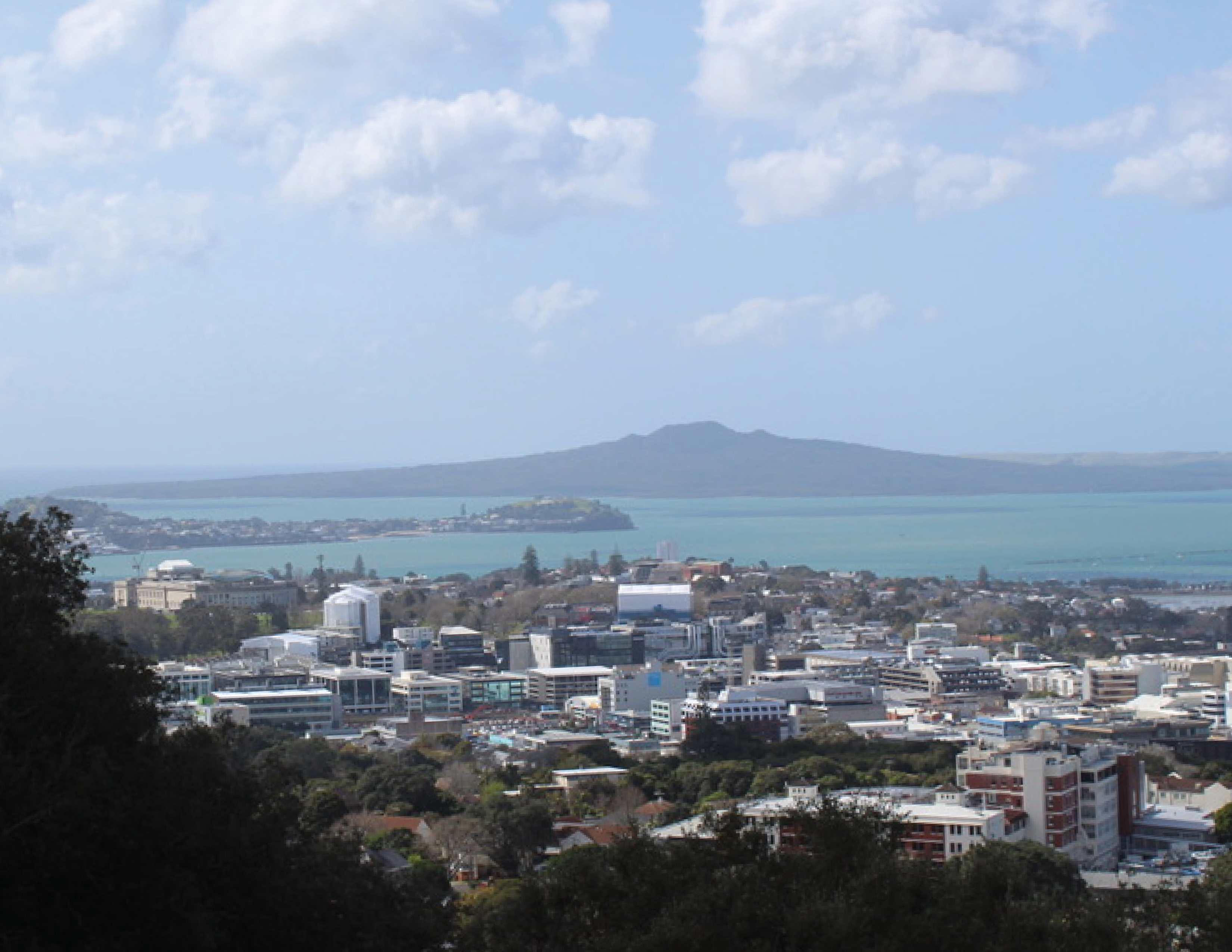 Pictures (Left to right): 1. Picture taken in Mt Eden 2. A flowering nz native Hebe 3. ‘Rubble rubble’ 2024 Objectspace courtyard design competition entry 4. Inside a Food Forest sketch 5.&6., Maud Street, section and plan drawings. Architecture by Placement
7. Clarendon St, Architecture by Lincoln Glover, Development by Property Collectives i.,ii.,iii. & vi. Native garden in the Australian style 8. Oaklands Rd., Wurundjeri Country by ResourceCo. i. Riparian planting of endangered species ii. Land-grading and grassland protection area iii. Regeneration of indigenous planting iv. Tube-stock tree planting v. Regeneration planting to site perimeter vi. Ecological v-drain 9. Gardenshed studio prototype 10. Preparations for growing mushrooms in moist environments i. Mushroom spawn in arborist mulch ii. Mushroom spawn in warm mixed hay with saw dust iii. Mushroom spawn in timber log grooves and hot waxed over 11. View of Rangitoto and Tāmaki Makaurau taken from Maungawhau.
Pictures (Left to right): 1. Picture taken in Mt Eden 2. A flowering nz native Hebe 3. ‘Rubble rubble’ 2024 Objectspace courtyard design competition entry 4. Inside a Food Forest sketch 5.&6., Maud Street, section and plan drawings. Architecture by Placement
7. Clarendon St, Architecture by Lincoln Glover, Development by Property Collectives i.,ii.,iii. & vi. Native garden in the Australian style 8. Oaklands Rd., Wurundjeri Country by ResourceCo. i. Riparian planting of endangered species ii. Land-grading and grassland protection area iii. Regeneration of indigenous planting iv. Tube-stock tree planting v. Regeneration planting to site perimeter vi. Ecological v-drain 9. Gardenshed studio prototype 10. Preparations for growing mushrooms in moist environments i. Mushroom spawn in arborist mulch ii. Mushroom spawn in warm mixed hay with saw dust iii. Mushroom spawn in timber log grooves and hot waxed over 11. View of Rangitoto and Tāmaki Makaurau taken from Maungawhau. Read the studio article here - Interview was part of A+WNZ Expanded Field Archive Series.